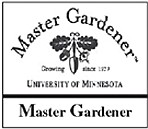December 15, 2005 at 7:18 a.m.
I was curious if live tree purchase is still what most people prefer, so I went to a tree farm. I went to the Erickson Brothers tree farm on Highway 8 about three miles west of Taylor’s Falls. There are other tree farms in the area but the Erickson Tree farm is just across highway #8 from where we live.
They shared with me that the Balsam fir is the best seller in the St. Croix Valley. It is the only Christmas tree native to Minnesota. The needles are flat, dark green, very fragrant, and the tree retains the needles well.
The Fraser fir is fast becoming very popular. However, it is often sold at a premium price. It has soft, short needles and somewhat twisted branched that expose the deep bluish underside of the needles. This species has both excellent fragrance and needle retention.
In the 1950’s the Red or Norway pine was the most popular tree in Minnesota. It is also our state tree. Its needles are in clusters of two and are longer than those of either Scotch of White Pine. Needle retention is similar to that of other pines.
White pine has gained favor in recent years because of its flexible soft needles, full appearance, excellent fragrance and blue green color. It also holds its needles well. The White Pine also is reported to cause fewer allergic reactions than other Christmas tree varieties.
Scotch Pine is the most widely planted pine species for Christmas tree production in Minnesota. Needle retention is excellent and the fragrance is good. The foliage of some varieties of Scotch pine change in autumn from green to various shades of yellow-green, so an artificial colorant is often used to make them look greener. Scotch pines are trimmed to grow full, which provide lots of outside surface to decorate, but not much room for ornaments in the interior of the tree.
Colorado Spruce hold their needles the best of all the spruce, but none of the spruce hold their needles very well after being cut. The sharp, stiff blue-green needles can make the handling of the trees unpleasant but have the reputation of preventing cat attacks as well. The openness of the branch makes it excellent for decoration.
White spruce is similar in needle retention to Colorado Spruce. The tree has a nice cone form and a greener color than the Colorado Spruce but some people object to the odor of the foliage. Black Hills Spruce is a variety of the White Spruce and sometimes is available as well. The needle of the Black Hills Spruce is shorter and darker green in color than the White Spruce.
If you purchase a pre-cut tree try to determine when the tree was cut. Some lots sell trees cut weeks earlier and transported in uncovered flat bed trucks, so the trees may be already dried out. If you want to buy a fresh long lasting pre-cut tree, find a vendor selling trees that are regionally harvested shortly before selling.
There are a couple of ways to check for freshness. One way is to bend the needles and the other is to thump the base of the tree. A bent needle should spring back, not break, and thumping the base of the tree against the ground should yield few fallen needles. If a tree fails either test, keep looking.
If your tree is not brought inside right away, store it in an unheated building or protected area away from the sun or wind. When you bring it in, make a fresh cut on the trunk to allow the tree to easily absorb water. A tree of average height will consume as much as two quarts of water a day at first. The tree will gradually decrease its water use over time.
Another option to ensure tree freshness is to go to one of the tree farms in the area and pick out your own tree. Good luck in finding a tree of your liking and have a great and safe holiday season.
In Your Yard and Garden
Don’t forget to stop by the Extension Office at 38780 Eighth Ave. to check out the great books we have for gift giving. There are also still a few copies of the 2006 Gardening calendar available. Be sure to say hi to Rene Rawson, our new full-time administrative assistant.
Ways to Access Information
The voice mail is checked year round. Leave a message at 651-674-4417 ext. 18, and a Master Gardener will return your call.
www.extension.umn.edu/county/chisago
Check out the 'Hot Topics' box in the middle of the page for current Chisago County Master Gardener news and events. You can also click on 'Ask a Master Gardener' next to the flower on the right hand side of the page. Here you can search 1000's of answers from Master Gardeners around the state. If you don't find your answer you can submit a question online or search for University publications.
Bell Museum of Natural History –– for information about snakes, skunks, raccoons or other wildlife around your yard, call the wildlife information line at (612) 624-1374 or www.bellmuseum.org.
To see the latest Yard and Garden newsletter, go to: http://www.exten sion.umn.edu/yardandgarden/YGLNews/YGLNews.html.





Comments:
Commenting has been disabled for this item.